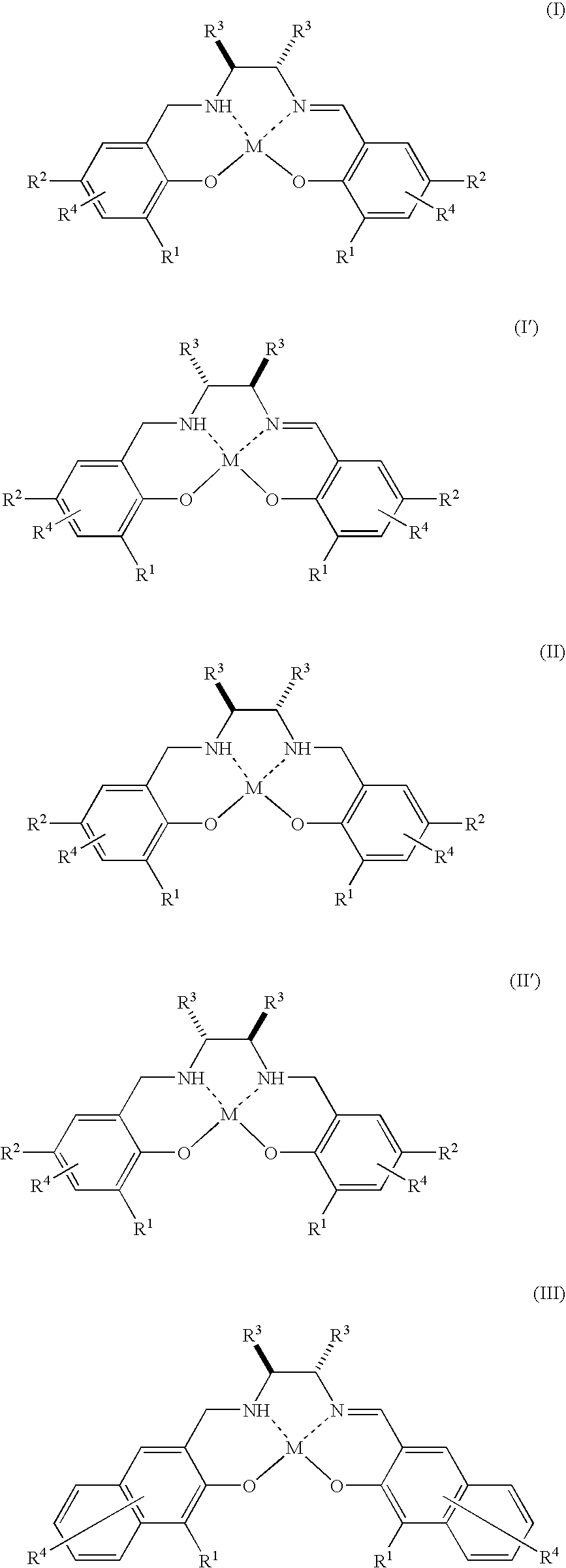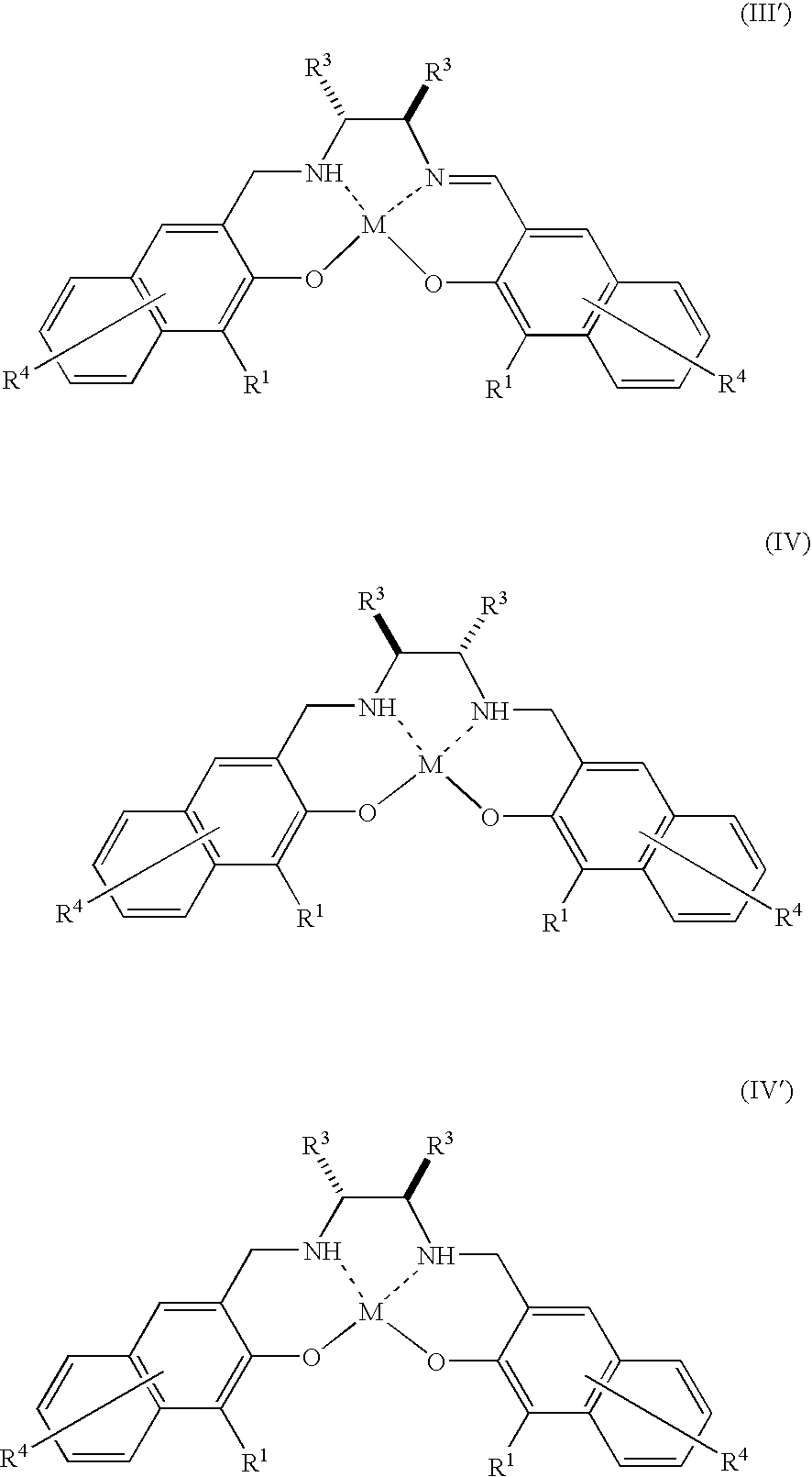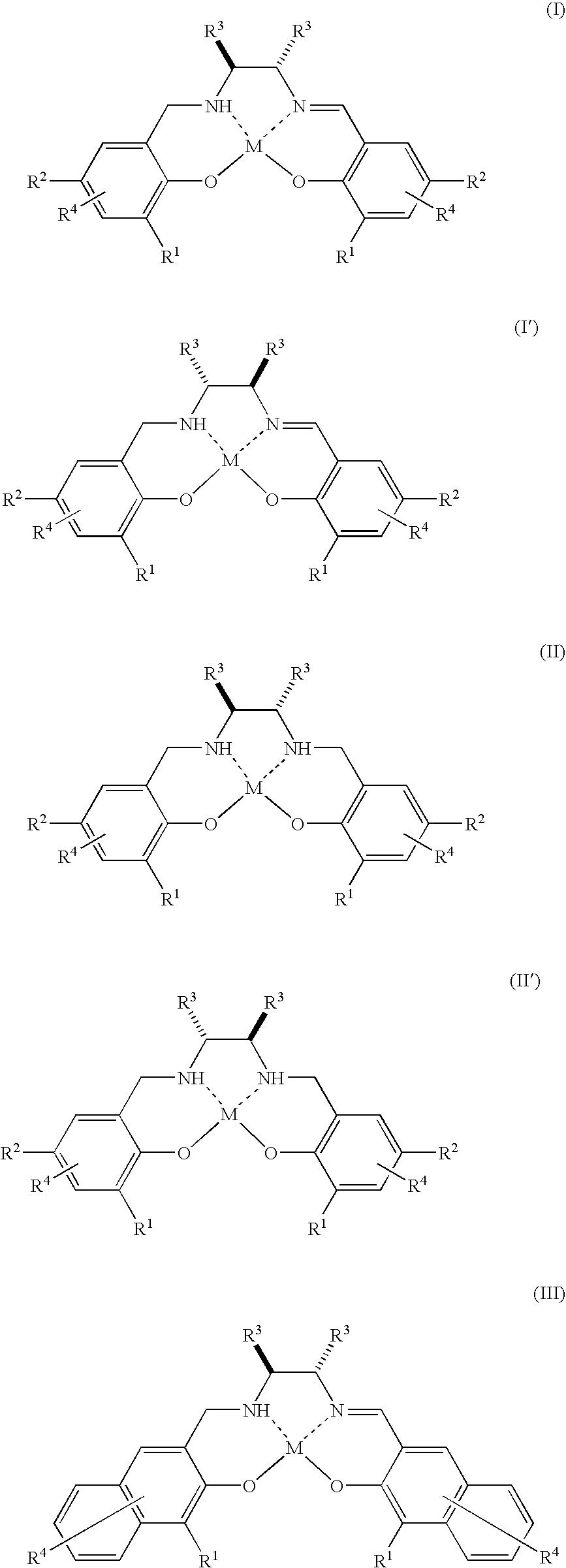Method for Production of Optically Active Epoxy Compound, and Complex Used Therefor and Process for Producing the Same
a technology of epoxy compound and complex, which is applied in the direction of organic compound/hydride/coordination complex catalyst, organic chemistry, physical/chemical process catalyst, etc., can solve the problems of insufficient catalyst turnover number and inability to promote epoxidation of olefin, and achieve high enantioselectivity
- Summary
- Abstract
- Description
- Claims
- Application Information
AI Technical Summary
Benefits of technology
Problems solved by technology
Method used
Image
Examples
example 1
[0051] The complex 1 (3.6 mg, 0.002 mmol) represented by the above formula (XXI) wherein O—NH—N—O is represented by the above formula (XXIV) is dissolved in dichloromethane (2.0 ml). To the resulting solution are continuously added a substrate 1 (26.0 mg, 0.20 mmol) and 30% aqueous hydrogen peroxide (22.7 mg, 0.20 mmol) and reacted by stirring at room temperature (25° C.) for twelve hours. Thereafter, the mixed solution is concentrated under a reduced pressure and separated through a chromatograph with silica gel using a mixed solution of pentane:diethylether (40:1) to obtain a product 1.
example 2
[0052] The complex 1 (1.2 mg, 0.00067 mmol) represented by the above formula (XXI) wherein O—NH—N—O is represented by the above formula (XXIV) is dissolved in dichloromethane (2.0 ml). To the resulting solution are continuously added a substrate 1 (86.7 mg, 0.67 mmol) and 30% aqueous hydrogen peroxide (76.0 mg, 0.67 mmol) and reacted by stirring at room temperature (25° C.) for 72 hours. Thereafter, the mixed solution is concentrated under a reduced pressure and separated through a chromatograph with silica gel using a mixed solution of pentane:diethylether (40:1) to obtain a product 1.
Examples 3˜4
[0053] The reaction is performed in the same manner as in Example 1 except that toluene or ethyl acetate is used as a solvent instead of dichloromethane. However, the reaction time is 18 hours.
example 5
[0054] The reaction is performed in the same way as in Example 1 except that tetrahydrofuran (THF) is used as a solvent instead of dichloromethane. However, the reaction time is 85 hours.
Examples 6˜9
[0055] The reaction is performed in the same way as in Example 4 except that a substrate 2, substrate 3, substrate 4 or substrate 5 is used instead of the substrate 1. However, the reaction time is 24 hours.
PUM
| Property | Measurement | Unit |
|---|---|---|
| temperature | aaaaa | aaaaa |
| temperature | aaaaa | aaaaa |
| reaction time | aaaaa | aaaaa |
Abstract
Description
Claims
Application Information
 Login to View More
Login to View More - R&D
- Intellectual Property
- Life Sciences
- Materials
- Tech Scout
- Unparalleled Data Quality
- Higher Quality Content
- 60% Fewer Hallucinations
Browse by: Latest US Patents, China's latest patents, Technical Efficacy Thesaurus, Application Domain, Technology Topic, Popular Technical Reports.
© 2025 PatSnap. All rights reserved.Legal|Privacy policy|Modern Slavery Act Transparency Statement|Sitemap|About US| Contact US: help@patsnap.com



